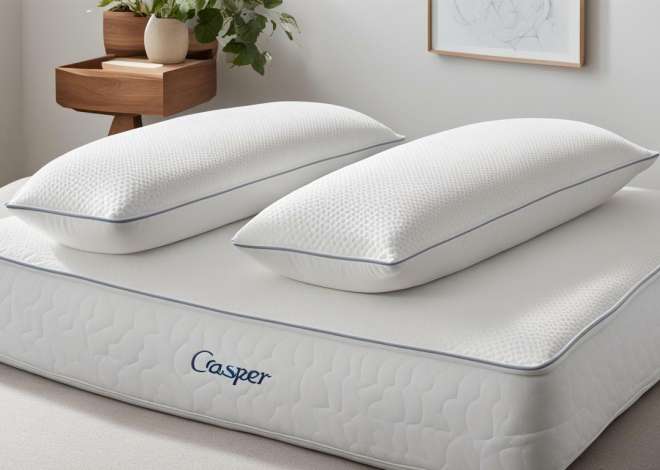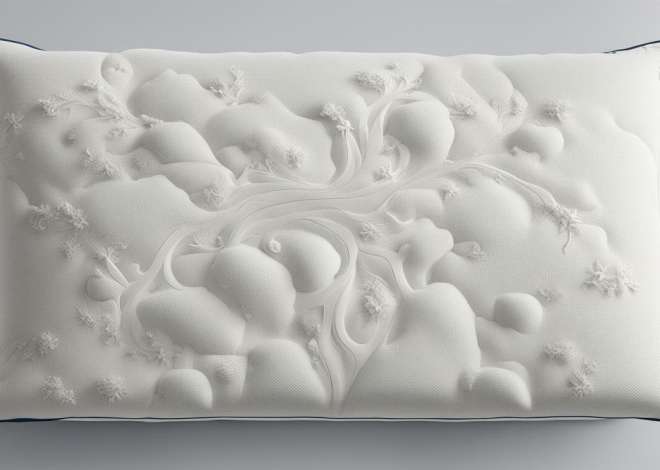
Bamboo vs Cotton Pillowcases for Skin Health
Are you someone who constantly wakes up with dry, itchy skin or bedhead? The answer might be in the material of your pillowcase. Cotton may have been the traditional choice for bedding for years, but recently, bamboo has entered the market as an alternative option. In this article, we’ll take a deep dive into the benefits of using bamboo and cotton pillowcases and how they impact your skin health.
Introduction to the benefits of using bamboo and cotton pillowcases
Getting a good night’s sleep is essential, but did you know that the material you use for your bedding can also improve your skin health? Both bamboo and cotton are popular choices for pillowcases, and for good reason.
Bamboo pillowcases are known for their hypoallergenic properties, making them a great choice for those with sensitive skin or allergies. They are also naturally antimicrobial, which means they can help prevent the growth of bacteria and other microorganisms that can cause skin irritation or breakouts. Additionally, bamboo is a highly sustainable material, as it grows quickly and requires less water and pesticides than other crops.
Understanding the properties of bamboo and cotton fabrics
Starting with cotton, it’s a natural fiber that’s been used in clothing and bedding for centuries. Cotton is breathable, soft, and can absorb moisture. Bamboo, on the other hand, is a relatively new material gaining popularity. Bamboo fibers have a unique structure that allows them to be softer than cotton, but also durable and breathable.
Bamboo fabric is also known for its antimicrobial properties, making it a great choice for clothing and bedding. The bamboo plant contains a natural antimicrobial agent called “bamboo kun” which helps to prevent the growth of bacteria and fungi on the fabric. This makes bamboo fabric a great choice for people with sensitive skin or allergies. Additionally, bamboo is a sustainable material as it grows quickly and requires less water than cotton to produce.
How do bamboo and cotton pillowcases affect skin health?
One major way that a pillowcase can impact your skin health is by reducing the amount of moisture on your skin. Cotton can absorb moisture from your skin, which may lead to wrinkles over time. Bamboo, on the other hand, is known for its moisture-wicking properties. This means that it can help keep your skin hydrated and reduce the appearance of wrinkles.
In addition to their moisture-wicking properties, bamboo pillowcases also have natural antimicrobial properties. This means that they can help prevent the growth of bacteria and other microorganisms that can cause acne and other skin irritations. Cotton pillowcases, on the other hand, can harbor bacteria and other germs if not washed frequently. So, if you’re looking for a pillowcase that can help keep your skin healthy and clear, bamboo may be the way to go.
Comparing the breathability and moisture-wicking abilities of bamboo and cotton pillowcases
When it comes to breathability, bamboo pillowcases have a slight edge over cotton. Bamboo is naturally hypoallergenic, making it a good choice for those with sensitive skin or allergies. Cotton, however, is also a breathable material and can be a good choice if you don’t sweat much during sleep.
When it comes to moisture-wicking abilities, bamboo pillowcases are superior to cotton. Bamboo fibers are naturally moisture-wicking, meaning they can absorb and evaporate moisture quickly, keeping you cool and dry throughout the night. Cotton, on the other hand, can absorb moisture but doesn’t dry as quickly as bamboo, which can lead to a damp feeling on the skin. So, if you tend to sweat during sleep, bamboo pillowcases may be a better choice for you.
Examining the antimicrobial properties of bamboo pillowcases
Bamboo pillowcases have antimicrobial properties which can help prevent the growth of bacteria and other microorganisms. This can be particularly beneficial for those who suffer from acne or other skin conditions. However, it’s important to still wash your pillowcase regularly to maintain its effectiveness.
Analyzing the durability and maintenance requirements of bamboo vs cotton pillowcases
Cotton pillowcases are generally more affordable than bamboo, but they also tend to wear out more quickly. Bamboo pillowcases, on the other hand, are more durable and can last for several years. Cotton pillowcases require frequent washing to maintain their softness, while bamboo pillowcases remain soft even after washing.
The environmental impact of choosing bamboo or cotton pillowcases
Cotton is a resource-intensive crop that requires large amounts of water and pesticides to grow. Bamboo, on the other hand, is a more sustainable crop that can grow faster and with less water. Bamboo pillowcases are also biodegradable, while most cotton pillowcases end up in landfills where they can take years to decompose.
Considerations for those with sensitive skin or allergies
If you have sensitive skin or allergies, it’s important to choose a pillowcase material that won’t irritate your skin. Both cotton and bamboo are generally safe for those with sensitive skin, but bamboo is hypoallergenic and may be a better choice for those with severe allergies.
Expert opinions on which type of pillowcase is best for skin health
Experts generally agree that both bamboo and cotton are good choices for pillowcases, but the choice ultimately depends on your personal preferences and needs. If you sweat heavily during sleep, a bamboo pillowcase may be more beneficial for you. If you have allergies or sensitive skin, bamboo may also be a better choice.
Tips for selecting the right bamboo or cotton pillowcase for your needs
When selecting a pillowcase, consider factors such as breathability, durability, and moisture-wicking abilities. Look for a pillowcase with a thread count of at least 300 for both bamboo and cotton. Finally, consider the price and maintenance requirements before making a final decision.
Conclusion: Which is better for your skin – bamboo or cotton pillowcases?
Both bamboo and cotton are good choices for pillowcases, but ultimately, it depends on your individual needs and preferences. If you’re looking for a more sustainable and durable option that’s naturally hypoallergenic, bamboo may be the way to go. However, if you prefer a more affordable option that’s also breathable and soft, cotton may be the better choice. Regardless of your choice, taking care of your pillowcase and washing it regularly is key in maintaining your skin health.


